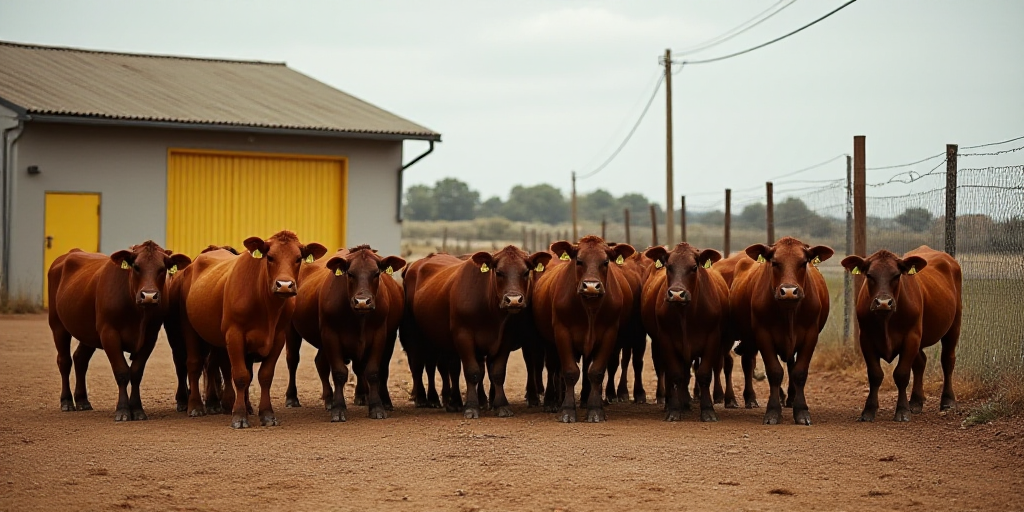Background on the Issue
The Regional Cattle Producers Union of Nuevo León (UGRNL) has called on the state government to collaborate with federal authorities in combating the cattle-killing fly (Cochliomyia hominivorax) plague, which was believed to be eradicated in Mexico since 2013.
Who is Involved?
Noel Ramírez, president of UGRNL, and Jorge Villarreal, the union’s treasurer, have highlighted that Nuevo León remains free of this infestation caused by the larvae of this fly, which poses a serious threat to cattle health.
Why is Collaboration Necessary?
Due to the detection of 1,230 cases of infected bovines in the United States, which led to a ban on cattle exports from May 11-25, the UGRNL emphasizes the need for synergies between cattle producers, state, and federal authorities. The goal is to align with the United States’ dynamics and reopen the sterile fly plant in Chiapas, enabling the resumption of cattle exports to the U.S.
Impact on Cattle Industry
The cattle-killing fly infestation has been detected mainly in southeastern Mexico, with the closure of the sterile fly-producing plant in Chiapas exacerbating the problem. Newly born calves are now the most affected, as the female fly lays its eggs on superficial wounds, impacting both domestic and other animals, primarily cattle.
Recommendations for Cattle Raisers
Ramírez advises cattle raisers in Nuevo León to inspect calves for infestations, as the female fly feeds on the live blood of warm-blooded animals by laying eggs along wound edges. He also urges against misinformation and denies the presence of the cattle-killing fly infestation in Nuevo León.
Export Restrictions and Decline
Nuevo León faces export restrictions of cattle to the U.S. due to lowered USDA health status for state cattle. This issue remains unresolved due to a lack of coordination, with outdated mobility and traceability controls.
Decline in Bovine Export
During the 2023-2024 cycle, Chihuahua, Sonora, and Durango—Mexico’s primary bovine export states—showed significant recovery. However, the current 2024-2025 cycle indicates a downward trend:
- Chihuahua: 556,263 head (42.11% growth) ↦ 235,745 head (-42.37%)
- Sonora: 407,696 units (35.32% growth) ↦ 201,050 units (-33.4%)
- Durango: 211,545 bovines (18.92% growth) ↦ below 50% decrease
Nationally, bovine export has also declined significantly. In 2024, Mexico exported 1,249,202 head of cattle, mainly from northern border states like Chihuahua, Sonora, and Durango. However, in the first quarter of 2025, export value dropped over 50% compared to the same period in 2024 due to the temporary U.S. import suspension following cattle-killing fly detection.
Key Questions and Answers
- What is the issue? The cattle-killing fly (Cochliomyia hominivorax) infestation threatens cattle health in Mexico, particularly in Nuevo León and other southeastern regions.
- Why is collaboration needed? To align with U.S. dynamics, reopen the sterile fly plant in Chiapas, and resume cattle exports to the U.S.
- What are the export restrictions in Nuevo León? The USDA lowered cattle health status in Nuevo León, causing export restrictions due to insufficient coordination and outdated controls.
- Why is bovine export declining? The temporary U.S. import suspension following cattle-killing fly detection in animals led to a more than 50% drop in export value during the first quarter of 2025.






